
On the night of Aug 03/04, 2025, under poor conditions due to smoke from Canadian wildfires, I acquired images of the recurrent nova T CrB. This star undergoes outbursts at long intervals of 80 years or so. Its next outburst is predicted to occur soon (but then again, it was also predicted to occur during 2024), and so I've joined the crowd who are monitoring it.
Due to the smoke and haze, tonight's measurements are noisy. It's clear that no outburst occured, though.
I did some experiments with the tracking rate of the 12-inch.
This recurrent nova brightens by about 8 magnitudes (!), from V = 10 to about V = 2, around every 80 years. Will we see another outburst THIS summer?
These observations involved:
Notes from the night:
The picture below shows a cropped image of the field of T CrB from Jun 14/15, 2024. The field of view is about 20 arcminutes across.

I've marked the location of several comparison stars, with magnitudes and names taken from the AAVSO's table X40237AAS. Note that the magnitudes listed for stars "A" and "B" have changed from the ones I listed in last year's notes.
star name B V
------------------------------------------------------
A 000-BJS-901 11.096 10.554
B 000-BBW-805 11.779 11.166
C 000-BPC-198 13.049 12.336
--------------------------------------------------------------------------
When the target is centered, the finder TV shows this field:

Here's the sky background over the course of the run. The sky value is about 200, much higher than the usual (50-80) due to the smoke.
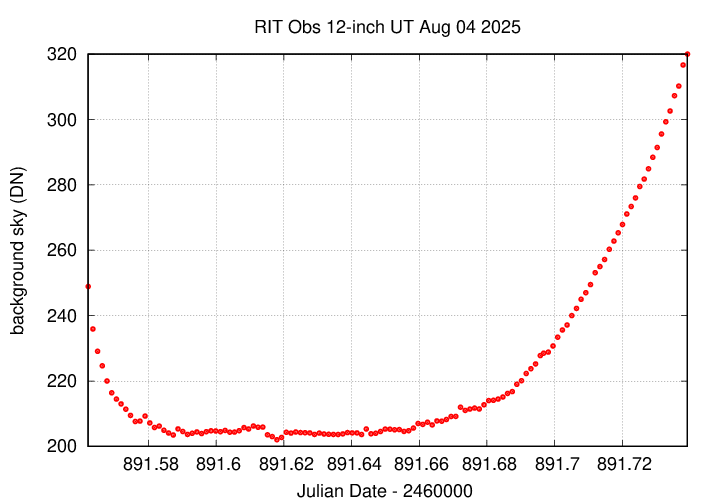
The FWHM had very large variations, probably due to smoke.
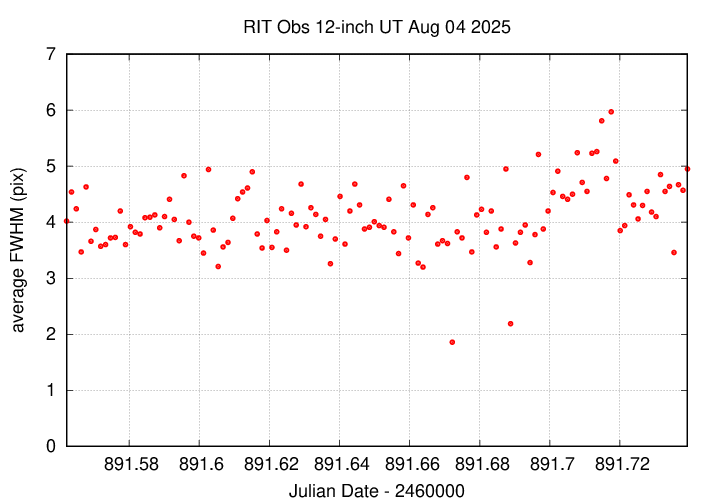
The graph below shows changes in the photometric zeropoint of an ensemble solution of the instrumental magnitudes over the course of the run. At least there are few trailed frames.
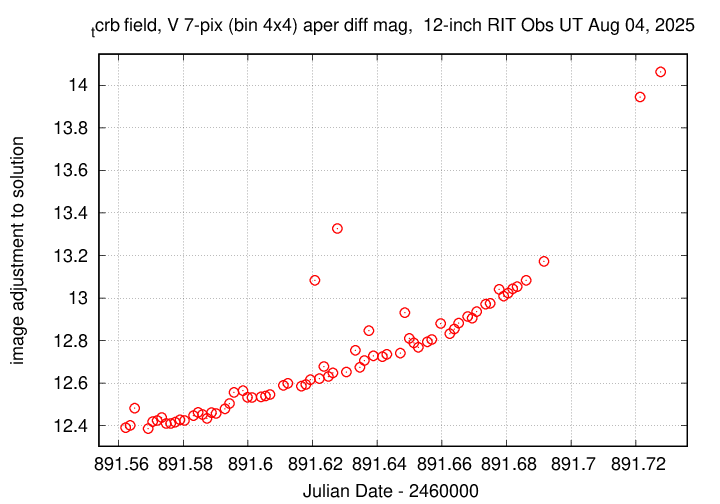
Using aperture photometry with a radius of 7 pixels in V filter (binned 4x4, each pixel is 1.036 arcsec, so a radius of 7.3 arcsec), and 7 pixels in B filter (binned 4x4, each pixel is 1.036 arcsec, so a radius of 7.3 arcsec), I measured the instrumental magnitudes of a number of reference stars and the target. Following the procedures outlined by Kent Honeycutt's article on inhomogeneous ensemble photometry, I used all stars available in each image to define a reference frame, and measured each star against this frame.
Because of the thick haze, instead of requiring 20 stars per image for data in the ensemble, I decreased the limit to only 10 stars (in V) and 8 stars (in B).
Sigma-vs-mag plots show that the floor in V-band was about 0.013 mag in V -- much higher than normal. It was worse in B -- 0.027 mag.
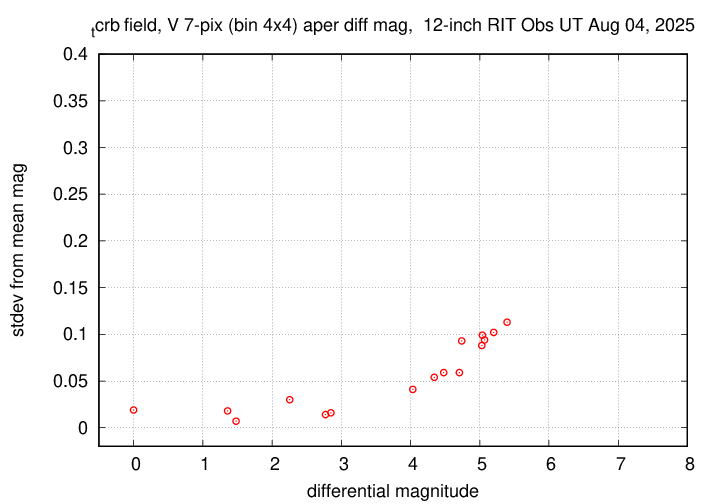
The measurements show that the target is still in quiescent phase.

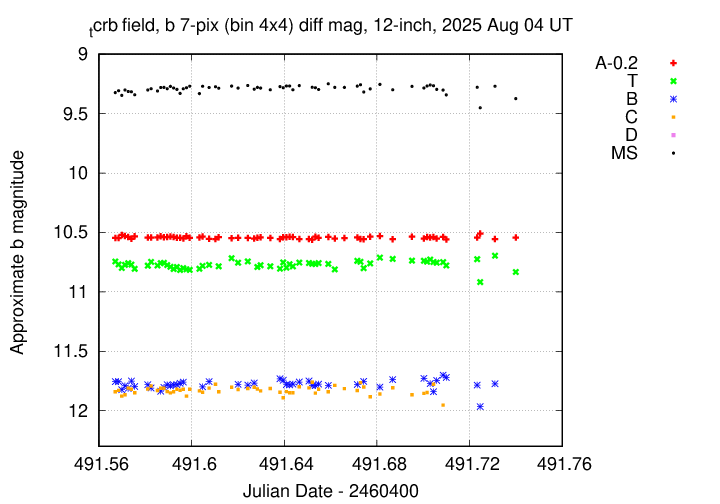
I've submitted these measurements to the AAVSO.